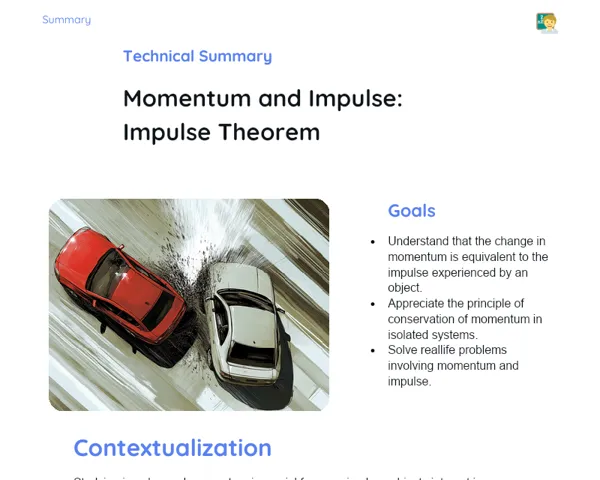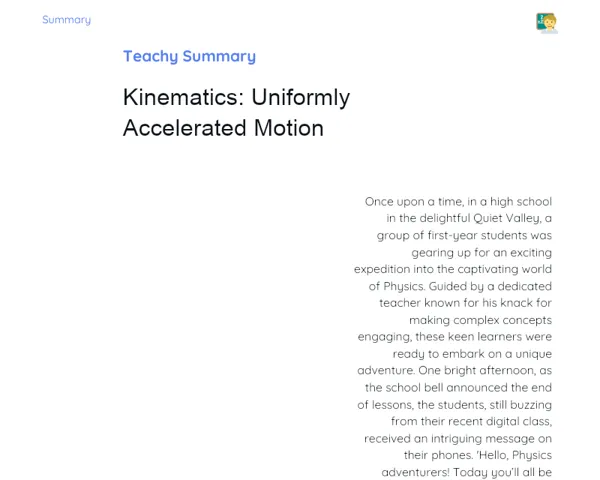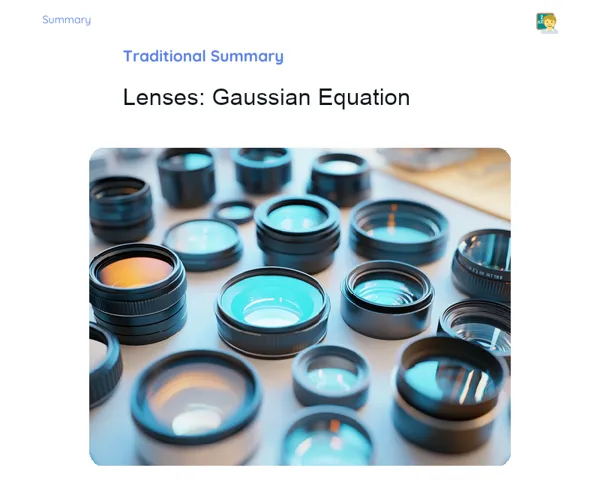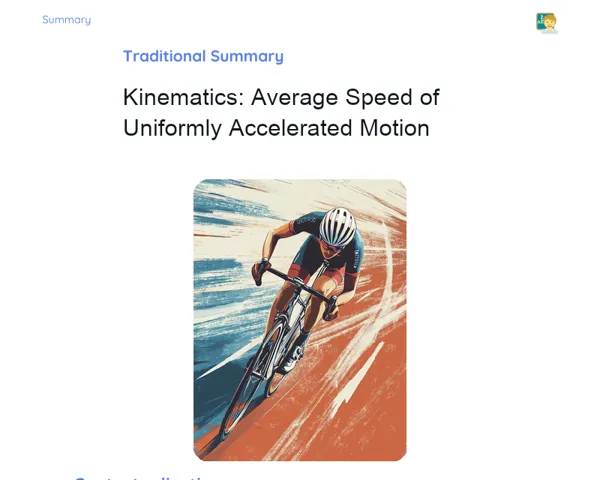Goals
1. Comprehend the key graphs of uniformly accelerated motion, particularly position versus time and velocity versus time graphs.
2. Develop skills to interpret and analyze uniformly accelerated motion graphs to tackle practical problems.
3. Get acquainted with the terminology and foundational concepts related to uniformly accelerated motion.
Contextualization
Uniformly accelerated motion (UAM) is a basic yet essential concept in physics, vital for grasping how objects behave under constant acceleration. Whether it's vehicles on the road or rockets soaring into space, UAM equips us to predict and analyze the dynamics of moving objects. For instance, traffic engineers apply UAM principles to design acceleration lanes and curves on roads, ensuring vehicles can safely speed up and slow down. In the automotive sector, motion graphs are crucial for evaluating the performance of new car models, focusing on the influence of acceleration on fuel efficiency and passenger safety.
Subject Relevance
To Remember!
Uniformly Accelerated Motion (UAM)
Uniformly Accelerated Motion (UAM) outlines the motion of an object that undergoes constant acceleration. This implies that the object's velocity alters uniformly over time. In UAM, the acceleration remains steady, and the position versus time and velocity versus time graphs exhibit specific characteristics that facilitate motion assessment.
-
Constant Acceleration: In UAM, the acceleration is consistent, meaning the object's velocity changes at a steady pace.
-
Velocity versus Time Graph: In UAM, the velocity versus time graph appears as a straight inclined line, with the slope representing the object's acceleration.
-
Position versus Time Graph: In UAM, the position versus time graph takes the form of a parabola, showing that the object's position alters in an accelerated manner.
Position versus Time Graphs
Position versus time graphs in UAM are essential for comprehending how an object's position evolves over time when subjected to constant acceleration. The parabolic shape of these graphs indicates whether the object's velocity is increasing or decreasing uniformly.
-
Parabolic Shape: The position versus time graph in UAM is a parabola, indicative of constant acceleration.
-
Interpreting the Curvature: The curvature of the graph informs us whether the object is accelerating or decelerating.
-
Intercept Point: The point where the graph intersects the time axis denotes the object's initial position.
Velocity versus Time Graphs
Velocity versus time graphs in UAM are crucial for scrutinizing how an object's velocity changes over time. These graphs typically manifest as straight inclined lines, where the slope signifies the object's constant acceleration.
-
Straight Line: The velocity versus time graph in UAM is linear, with the slope representing acceleration.
-
Area Under the Curve: The area beneath the velocity versus time graph represents the change in position of the object.
-
Intercept with the Velocity Axis: The point where the straight line meets the velocity axis denotes the object's initial velocity.
Practical Applications
-
Engineering Projects: Engineers leverage UAM graphs to design acceleration lanes and curves on roads, ensuring that vehicles can accelerate and decelerate seamlessly.
-
Automotive Sector: Within the automotive industry, UAM graphs facilitate the evaluation of new car models' efficiency, emphasizing how acceleration affects fuel consumption and passenger safety.
-
Aviation: In aviation, pilots and air traffic controllers depend on UAM principles to ensure safe landings and takeoffs, employing motion graphs for maneuver planning and execution.
Key Terms
-
Uniformly Accelerated Motion (UAM): Motion where the acceleration remains constant and the velocity varies uniformly over time.
-
Position versus Time Graph: A graphical representation depicting the changes in an object's position over time in UAM, typically resembling a parabola.
-
Velocity versus Time Graph: A graphical representation showing how an object's velocity changes over time in UAM, often in the form of a straight line.
Questions for Reflections
-
How do UAM graphs assist engineers and scientists in predicting the behavior of vehicles and other moving objects?
-
In what manners can your knowledge of UAM graphs be applied in daily life or your future profession?
-
What distinguishes the position versus time and velocity versus time graphs in UAM, and how do these variations influence motion analysis?
Hands-On Challenge: Construction and Analysis of UAM Graphs
This challenge seeks to reinforce your grasp of uniformly accelerated motion graphs by employing what you’ve learned in class to create and analyze graphs using experimental data.
Instructions
-
Form groups of 3 to 4 members.
-
Each group will receive a set of simulated data from a UAM experiment (e.g., time and velocity data of an object under constant acceleration).
-
Utilize graph paper or plotting software to chart the position versus time and velocity versus time graphs.
-
Examine the resulting graphs and discuss the identified characteristics, such as the linearity of the velocity versus time graph and the curvature of the position versus time graph.
-
Present your graphs and conclusions to the class, elucidating how the experimental data connects to UAM equations and concepts.



